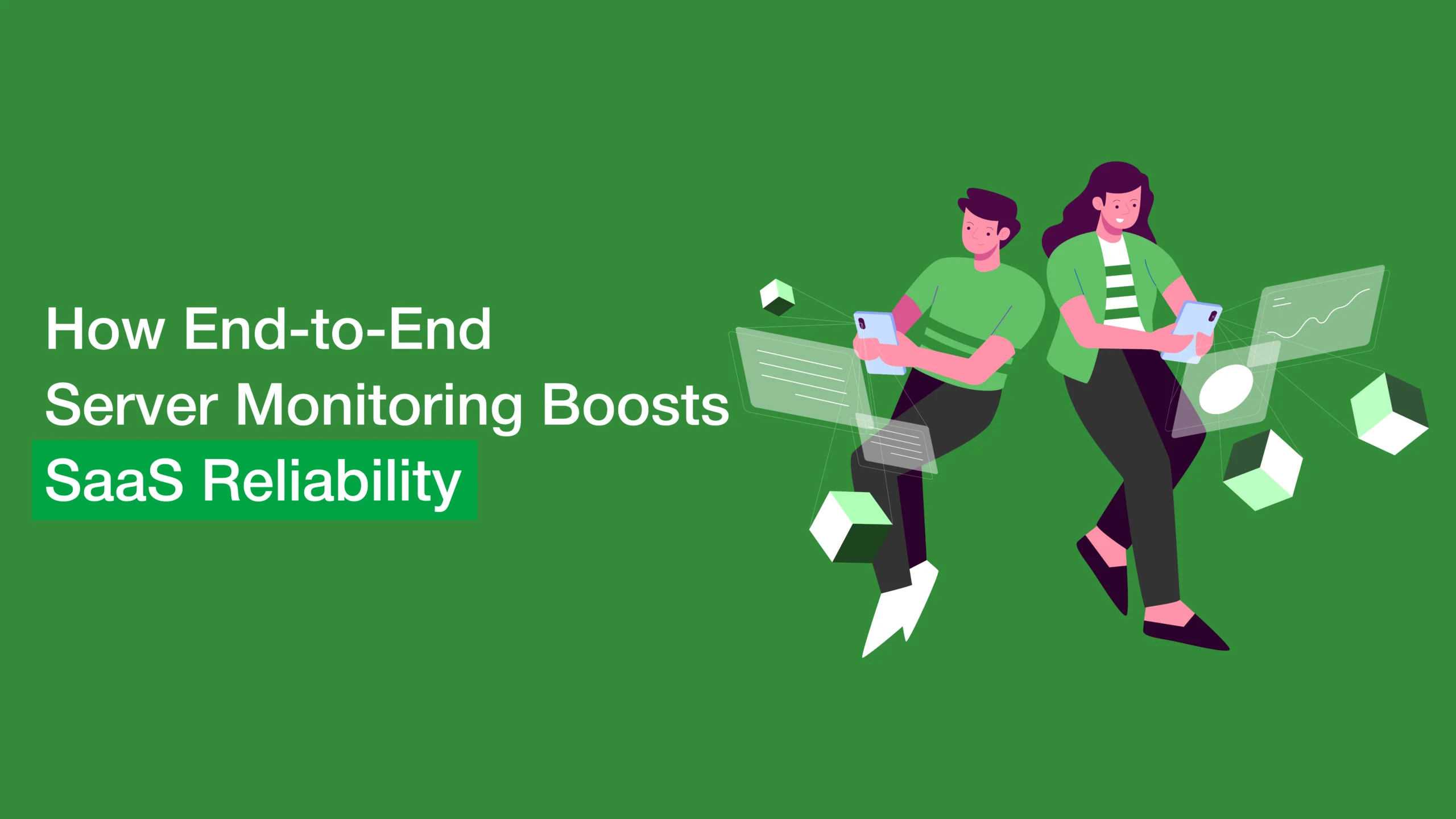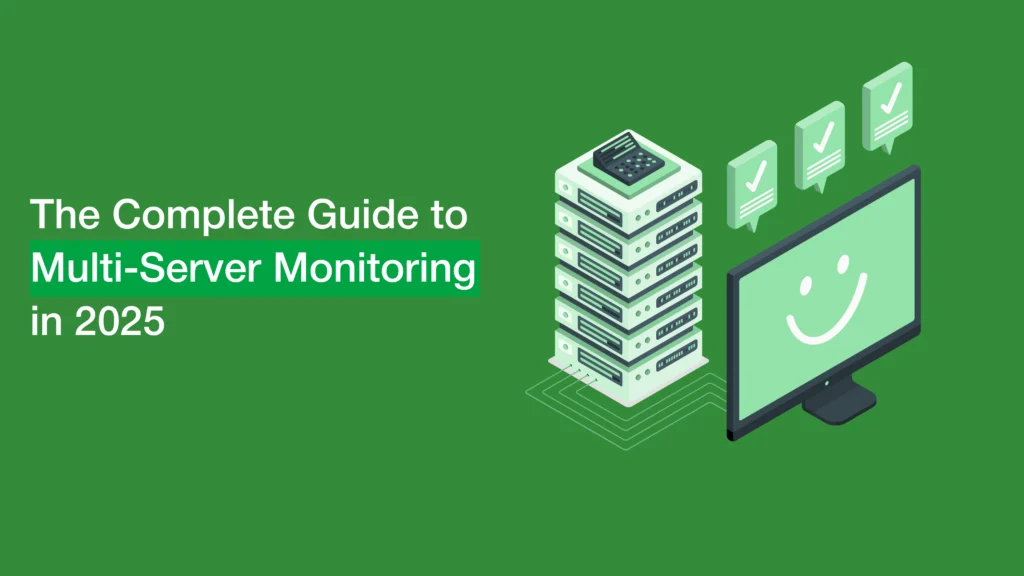
Uptime and dependability are more than just performance indicators in the SaaS-driven economy of today; they are essential to the...

Multi-server monitoring in 2025 enables businesses to manage multiple servers across on-prem, cloud, and hybrid environments through centralized dashboards, real-time alerts, and automated incident response—reducing downtime and improving infrastructure performance.
Multi-server monitoring in 2025 enables businesses to manage multiple servers across on-prem, cloud, and hybrid environments through centralized dashboards, real-time alerts, and automated incident response—reducing downtime and improving infrastructure performance.
In today’s fast-paced digital environment, monitoring one server isn’t enough. Most companies run complex, distributed systems where an unnoticed issue on a single server can disrupt an entire application or service. From microservices to legacy applications to edge servers, every node needs visibility.
A modern server monitoring tool provides that visibility—and it’s become essential for IT, DevOps, and SRE teams managing real-time systems across various industries.
If you’re still using outdated methods—manual logs, basic ping tests, or siloed dashboards—you’re facing:
A modern multi-server monitoring tool offers integrated insights, real-time data, and automated responses. It gives you the control and clarity needed to keep systems running smoothly—even during traffic surges or hardware failures.
See what’s trending in top server monitoring tools for 2025.
Let’s say your SaaS platform is experiencing slow load times. A robust server monitoring tool detects high CPU usage on a backend node, instantly sends a server alert, and links it to logs and metrics. With automation, the issue is resolved—often before customers even notice.
This is server monitoring in action: automated detection, clear alerting, and rapid incident response.
Tools like Kllyroo bring this into reality with live dashboards, customizable alert thresholds, and seamless integrations.
Whether you’re in healthcare or retail, your team needs visibility across environments. Here’s how real-world server monitoring benefits key industries:
Industry | Use Case |
Healthcare | Keeps EHR systems online, tracks latency in telehealth sessions, supports HIPAA compliance |
Finance | Ensures consistent payment processing, alerts on latency or transaction failures |
SaaS/DevOps | Monitors deployments, containers, APIs; flags failed builds or high error rates |
E-commerce | Tracks traffic surges, prevents checkout errors, optimizes DB performance |
Education | Ensures uptime during online exams, detects spikes in LMS platforms |
Streaming/Media | Maintains smooth delivery, flags server load or bitrate drops instantly |
See more server monitoring use cases and examples to understand how other teams succeed.
The right server monitoring tool is one that works with your existing stack and scales with your growth. In 2025, your tool must support multi-cloud, container orchestration, and automation.
Look for features like:
Choosing without guidance? Here’s how to choose the best server monitoring tool.
DevOps teams need to track more than uptime—they need visibility into:
DevOps monitoring tools built into platforms like Kllyroo can monitor microservices, track MTTR (mean time to recovery), and flag poor resource utilization instantly. Monitoring tools help DevOps teams:
See our breakdown of the best monitoring tools for DevOps.
Still facing these issues?
A strong multi-server monitoring tool tackles all these pain points with:
Learn what features matter most in server monitoring tool features.
Server uptime monitoring is the bare minimum in 2025. Uptime alone doesn’t show:
Today’s performance needs monitoring server performance in real time—not just tracking if a server is “up.” Tools like Kllyroo give you latency visualizations, error breakdowns, and proactive resolution paths—not just ping graphs.
In today’s world of high-performance, always-on applications, modern server monitoring tools are critical to success. Whether you’re scaling a SaaS product or managing IT for a hospital network, real-world server monitoring enables you to:
Kllyroo is a purpose-built platform that delivers intelligent, scalable monitoring for modern businesses. From automation to dashboards to analytics, Kllyroo helps you manage more—without the chaos.
Ready to Monitor Smarter?
Don’t wait for the next outage. Get centralized, actionable monitoring that works across all your environments.
Start your journey with Kllyroo — where visibility meets reliability.
The best tool is one that supports multi-cloud, containers, real-time alerts, and automation. Kllyroo is among the top-rated server monitoring tools for teams looking to scale efficiently.
By providing real-time insights, alerting on anomalies, and automating response workflows, server monitoring improves uptime and reduces manual intervention.
DevOps monitoring tools should integrate with CI/CD pipelines, support custom metrics, and provide context-rich alerts to streamline incident response.

Uptime and dependability are more than just performance indicators in the SaaS-driven economy of today; they are essential to the...

Continuous accessibility is essential for e-commerce to flourish. E-commerce website uptime is now essential in 2025, when client expectations are...

The fintech industry operates on trust. Every login attempt, transaction, and real-time balance update needs to be perfect. Fintech infrastructure...
WhatsApp us